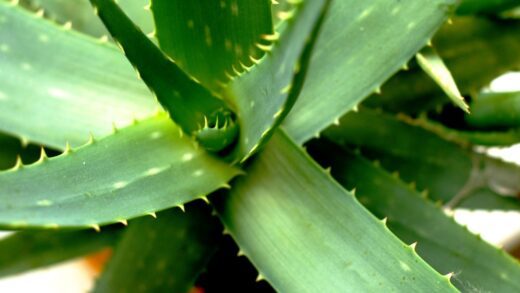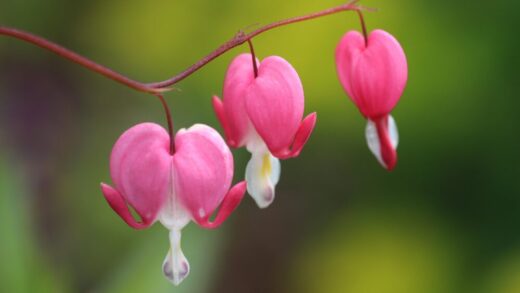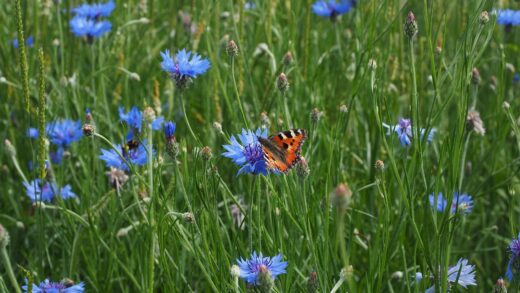Understanding the specific water requirements of aloe vera is arguably the most critical aspect of its care, as improper irrigation is the leading cause of problems for this resilient succulent. The key to successful watering lies in mimicking the conditions of its native arid environment, which experiences infrequent but thorough rainfall. This means the plant is adapted to endure long periods of drought and is extremely sensitive to an excess of water around its roots. Mastering the right watering technique is not about adhering to a rigid schedule but about learning to assess the plant’s needs based on its environment and the condition of its soil.
Many new aloe owners make the fatal mistake of treating it like a typical tropical houseplant, providing small amounts of water frequently. This approach is the direct opposite of what an aloe vera requires and creates a constantly damp soil environment, which is the perfect breeding ground for fungal pathogens that cause root rot. The plant’s fleshy, water-storing leaves are a clear indicator of its drought-tolerant nature, signaling that it prefers its soil to dry out completely between waterings.
The ideal watering method is one that is both deep and infrequent. This involves thoroughly soaking the entire root ball and then allowing a significant dry period to follow. This cycle of drenching and drying encourages a strong, healthy root system that grows deep into the pot in search of moisture. It also ensures that the roots have access to oxygen, which is just as vital as water for their function and survival.
Ultimately, successful irrigation of aloe vera is a skill of observation. Factors such as the season, the amount of light the plant receives, the size of its pot, and the ambient temperature all influence how quickly the soil dries out. By paying close attention to these variables and learning to read the cues from both the soil and the plant itself, you can develop an intuitive watering routine that will keep your aloe vera healthy and thriving for years.
Understanding aloe vera’s succulent nature
To water an aloe vera correctly, it is essential to first understand its physiology as a succulent. Succulents are plants that have evolved specialized tissues capable of storing large amounts of water, allowing them to survive in arid or semi-arid climates with low or erratic rainfall. In the case of aloe vera, this water is stored in the thick, fleshy gel within its leaves. This internal reservoir is what makes the plant so resilient to periods of drought.
This incredible adaptation means the plant has a very different relationship with water compared to many other common houseplants. While a peace lily might wilt dramatically after only a few days without water, an aloe vera can survive for weeks or even months on the moisture it has stored. Its root system is designed for the rapid absorption of water when it becomes available, but it is not equipped to handle prolonged exposure to moisture.
The roots of aloe vera, like those of most succulents, require a significant amount of oxygen to function properly. When soil remains waterlogged for extended periods, the tiny air pockets within the soil fill with water, effectively suffocating the roots. This lack of oxygen kills the root tissue, leading to decay, a condition known as root rot. Once root rot begins, it can spread quickly, preventing the plant from absorbing water and nutrients and often leading to its demise.
Therefore, the entire watering strategy must revolve around preventing this state of constant dampness. Your goal is not just to provide water, but to provide it in a way that respects the plant’s natural adaptations. This means embracing a cycle of feast and famine, providing a thorough drenching followed by a period of complete dryness, which allows the roots to breathe and function as they were designed to.
The ‘soak and dry’ method
The most effective and widely recommended technique for watering aloe vera is the “soak and dry” method. This approach perfectly aligns with the plant’s natural preferences and significantly reduces the risk of overwatering. The method is simple in principle: you water the plant thoroughly until the soil is completely saturated, and then you do not water it again until the soil has dried out completely. This ensures the plant gets a deep drink while preventing the persistent dampness that leads to root rot.
To execute the “soak and dry” method properly, take the plant to a sink or a basin. Slowly pour water over the entire surface of the soil until it begins to flow freely from the drainage hole at the bottom of the pot. Allowing the water to run through for a minute or so ensures that all parts of the root ball have been moistened. This deep watering encourages the roots to grow downwards, creating a stronger, more stable root system.
After the thorough soaking, it is crucial to let the pot drain completely. Allow it to sit in the sink for at least 15 to 30 minutes, or until it stops dripping. This step is vital because it prevents the pot from sitting in a saucer full of standing water, which would negate the benefits of the well-draining soil and pot. The plant should never be left with “wet feet,” as this is a direct invitation for root rot to develop.
The second half of the method—the drying period—is just as important. After watering, you must wait for the soil to dry out entirely before even considering watering again. The exact time this takes will vary, but you should check the soil moisture every week or so. You can do this by inserting your finger deep into the soil; if you feel any moisture at all, it is too soon to water. For larger pots, a wooden dowel or moisture meter can be used to check the moisture level at the bottom.
Factors influencing watering frequency
There is no universal, one-size-fits-all schedule for watering aloe vera, such as “water once a week.” The frequency of irrigation depends entirely on a combination of environmental and cultural factors that affect how quickly the soil dries out. One of the most significant factors is light. An aloe vera receiving hours of bright, indirect light will use water for photosynthesis much faster than a plant in lower light conditions, and its soil will dry out more quickly.
The season of the year plays a major role in determining water needs. During the active growing season of spring and summer, when temperatures are warmer and daylight hours are longer, the plant will be actively growing and will require more frequent watering. Conversely, during the dormant period of late autumn and winter, the plant’s growth slows down dramatically. During this time, you must reduce your watering frequency significantly, sometimes to as little as once a month, to prevent the soil from staying cold and wet.
The size and type of the pot also have a substantial impact. Smaller pots hold less soil and therefore dry out much faster than larger ones. As previously mentioned, pots made from porous materials like terracotta will wick moisture away from the soil, causing it to dry more quickly than a plastic or glazed ceramic pot. Your choice of container will directly influence how often you need to reach for the watering can.
Finally, the ambient temperature and humidity of the plant’s location are important variables. A plant in a warm, dry room will naturally have its soil dry out faster than one in a cooler, more humid environment. All these factors—light, season, pot, and climate—must be considered together. This is why it is essential to check the soil’s moisture level directly rather than watering based on a predetermined calendar schedule.
Signs of overwatering and underwatering
Learning to recognize the physical signs of improper watering is a crucial skill for any aloe vera owner. Overwatering is the more dangerous of the two, and its signs can sometimes be subtle at first. The most common indicators include leaves that are yellowing, particularly the lower ones, and leaves that feel soft, mushy, or waterlogged. The plant may also look generally unhealthy and may start to develop brown or black spots on its leaves.
Another clear sign of overwatering is a stem that becomes soft and mushy at the base, near the soil line. This is a tell-tale symptom of basal stem rot, which is an advanced stage of decay that is often irreversible. If you notice a foul or musty smell coming from the soil, it is a strong indication that the roots are rotting beneath the surface. At this point, you would need to unpot the plant immediately to inspect the roots and salvage any healthy parts.
Underwatering, while less immediately fatal, also produces distinct symptoms. The most obvious sign is that the leaves will begin to look thin, deflated, and may start to curl inwards at the edges. Instead of being plump and firm, they will feel pliable and less turgid. The tips of the leaves may also start to turn brown and dry out, becoming crispy to the touch.
An underwatered aloe may also exhibit a change in its overall posture. The leaves, which normally grow in an upright fashion, may start to droop or flatten out. While these signs can be alarming, the good news is that an aloe vera plant can almost always recover from being too dry. A thorough watering using the “soak and dry” method will typically cause the leaves to plump back up within a day or two, restoring the plant to its healthy state.


















